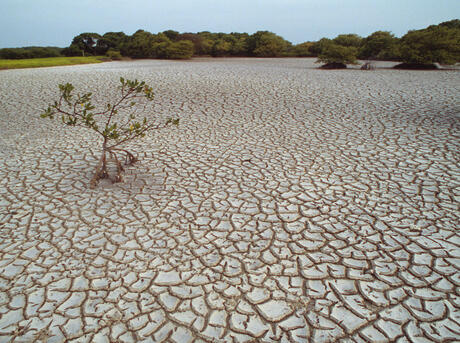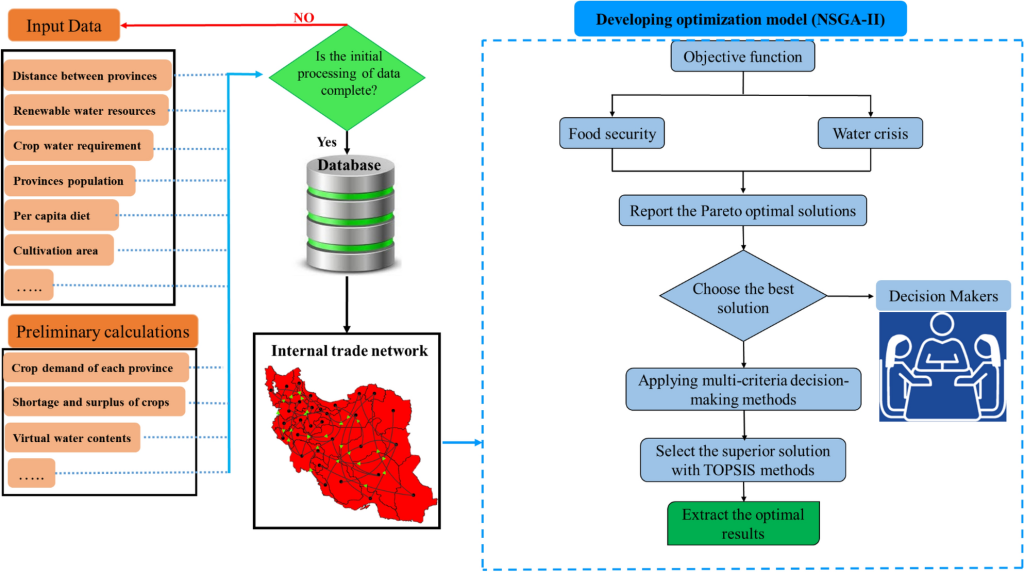Are you struggling to grow plants in a water-scarce environment? You’re not alone.
Many farmers and gardeners face the same challenge. Finding the right crops for dry areas can be frustrating. But don’t worry; there are solutions. Imagine transforming your barren land into a thriving, productive garden. It’s possible, and this article is here to show you how.
We’ll explore the best crops for areas with limited water. These plants can survive and even thrive where others wither. Ready to discover which crops can save you time, water, and money? Keep reading to find out how you can make the most of every drop and turn your landscape into a flourishing oasis.
Drought-resistant Grains
In regions with limited water resources, choosing the right crops is vital. Drought-resistant grains are a smart choice for farmers facing water scarcity. These grains can thrive in dry conditions, offering a reliable harvest. They require less water, making them ideal for arid areas. Let’s explore some top drought-resistant grains you can consider.
Wheat
Wheat is a staple crop known for its resilience. It adapts well to different climates and soil types. With efficient water use, wheat can grow with minimal irrigation. It provides essential nutrients and serves as a foundation for various foods.
Sorghum
Sorghum is another hardy grain suited for dry environments. It can survive in high temperatures and low rainfall areas. Sorghum is versatile, serving as food, animal feed, and biofuel. Its deep roots help it access underground moisture.
Millet
Millet is a small-seeded grain popular in water-scarce regions. It grows quickly and withstands drought conditions. Millet is rich in protein and fiber, making it nutritious. It can be used in porridge, bread, and even beer.
Barley
Barley is praised for its ability to grow in dry lands. It requires less water compared to other grains. Barley is a source of vitamins and minerals. It is used in soups, stews, and beverages.
Quinoa
Quinoa thrives in areas with limited water. It is a complete protein source, offering all essential amino acids. Quinoa adapts to diverse climates and soil conditions. It is used in salads, soups, and as a rice substitute.

Water-efficient Vegetables
Selecting the right crops for dry areas boosts growth and conserves water. Consider growing drought-tolerant vegetables like beans, squash, and sweet potatoes. These plants thrive with less water, making them ideal for arid regions.
When living in water-scarce areas, gardening might seem like an impossible dream. But, with a little planning, you can grow a thriving vegetable garden using water-efficient crops. These vegetables not only conserve water but also provide a bounty of fresh produce for your kitchen.1. Carrots
Carrots are a great choice for water-scarce areas. They have a deep root system that seeks out moisture far below the soil surface. Sow carrot seeds in well-drained soil and water deeply but infrequently. This encourages the roots to grow deep and strong. Have you ever tasted a carrot plucked fresh from the garden? It’s a sweetness like no other.2. Tomatoes
Tomatoes are surprisingly water-efficient. They thrive with deep watering once a week, rather than frequent shallow watering. Choose drought-tolerant varieties like ‘Celebrity’ or ‘Roma’. These can withstand dry spells better than most. Imagine the joy of picking your own juicy tomatoes on a hot summer day.3. Zucchini
Zucchini is a prolific producer and doesn’t need much water to flourish. Its large leaves help shade the soil, reducing evaporation. Plant zucchini in a sunny spot and mulch heavily to retain moisture. A single plant can supply more than enough for a small family. Have you ever tried zucchini bread? It’s a delightful way to use your harvest.4. Peppers
Peppers, both sweet and hot, are well-suited for dry climates. They benefit from mulching, which keeps the soil cool and moist. Water them deeply once a week. You might be surprised at how little water they need to produce a generous crop. What dishes could you spice up with homegrown peppers?5. Eggplants
Eggplants are resilient and can handle dry conditions. They love the heat and require minimal water once established. Select drought-tolerant varieties like ‘Black Beauty’ or ‘Nadia’. Their glossy fruits are not only beautiful but versatile in the kitchen. Can you imagine a ratatouille made from your own garden’s bounty?Choosing water-efficient vegetables is a smart way to garden sustainably. These crops not only save water but also deliver delicious, homegrown produce to your table. What will you plant in your water-wise garden?
Innovative Farming Techniques
Drought-tolerant crops like sorghum, millet, and quinoa thrive in water-scarce areas. These resilient plants require minimal water, making them ideal for dry climates. By growing these crops, farmers can ensure a steady harvest even with limited water resources.
Efficient water use is a game-changer for farmers in water-scarce areas. With climate change and growing populations, finding ways to grow crops with minimal water is crucial. Innovative farming techniques offer sustainable solutions to this pressing issue. These methods focus on maximizing water efficiency, ensuring crops receive just what they need to thrive. Let’s dive into some of these groundbreaking approaches that could transform your farming practices.1. Drip Irrigation Systems
Drip irrigation delivers water directly to the plant’s roots, minimizing evaporation. It’s like giving your plants a personal water bottle, ensuring every drop counts. This technique can save up to 50% more water compared to traditional methods. Have you considered how much water you could save with a simple switch to drip irrigation?2. Mulching
Mulching is a great way to retain soil moisture. By covering the soil with organic materials like straw or bark, evaporation is significantly reduced. This technique not only conserves water but also enriches the soil. Imagine your garden beds staying moist and fertile without constant watering.3. Rainwater Harvesting
Collecting and storing rainwater is a smart strategy in areas with unpredictable rainfall. Simple systems like barrels connected to your gutters can make a big difference. This water can be used for irrigation during dry spells, ensuring your crops stay healthy. Have you ever thought about how much rainwater you could collect from your roof?4. Drought-resistant Crops
Choosing crops that naturally require less water is a proactive approach. Varieties like sorghum and millet thrive in arid conditions. These crops can withstand dry spells, providing a reliable harvest. What if your crop choice could help you maintain productivity during water shortages?5. No-till Farming
No-till farming minimizes soil disturbance, preserving moisture levels. By leaving crop residues on the field, you create a protective layer that keeps the soil moist. This approach also improves soil health over time. Could reducing tillage in your fields boost your water efficiency?6. Precision Agriculture
Using technology to monitor soil moisture and crop needs can optimize water use. Sensors and data analytics allow you to water only when necessary, preventing waste. This method ensures your crops get exactly what they need, when they need it. Have you explored how technology could make your farm more water-efficient? These techniques not only conserve water but also improve crop yields. Embracing innovative farming can lead to a more sustainable future. With these tools at your disposal, how will you transform your farming practices to adapt to water scarcity?
Sustainable Crop Varieties
Water scarcity challenges farmers worldwide. Sustainable crop varieties offer solutions. These crops require less water. They thrive in arid regions. Farmers can maintain productivity with these crops. Let’s explore some of these resilient options.
1. MilletMillet grows well in dry conditions. It needs little water. This grain is nutritious and versatile. It can be used in many dishes. It helps ensure food security in dry areas.
2. SorghumSorghum is drought-tolerant. It adapts to various climates. This crop provides grain for people and fodder for animals. Sorghum supports both food and livestock needs.
3. TeffTeff is a tiny grain. It grows in tough conditions. It is rich in nutrients. Teff is a staple in many arid regions. Its resilience makes it a valuable crop choice.
4. QuinoaQuinoa thrives in dry, salty soils. It is a protein-rich crop. This grain is flexible in cooking. Quinoa is ideal for water-scarce areas. It offers a balanced diet solution.
5. AmaranthAmaranth requires minimal water. It grows quickly and offers high yields. This crop is rich in vitamins and minerals. Amaranth supports nutrition in dry climates.
6. ChickpeasChickpeas are hardy legumes. They grow with limited water. These legumes enrich soil fertility. Chickpeas add protein to diets. They are a reliable crop for water-scarce regions.

Conclusion
Choosing the right crops helps in dry areas. Drought-resistant plants survive well with little water. Farmers can grow sorghum, millet, and barley easily. These crops adapt to tough conditions. They ensure food security and reduce water stress. Local farmers can benefit from these hardy plants.
They save resources and boost yields. A balanced approach is vital for sustainability. Embrace smart crop choices for better results. With careful planning, success is achievable in water-scarce regions. Sustainable farming practices enhance resilience, ensuring future growth. Prioritize crops that thrive in dry soil for lasting benefits.



